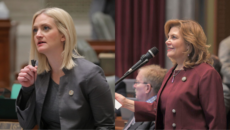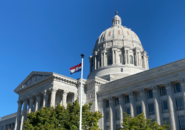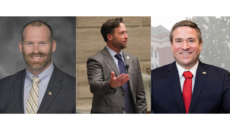Missouri schools and libraries have been awarded more than $48 million in federal relief funds over the past three months to address the digital divide and expand broadband access for students.
More than 430 schools and libraries across the state were awarded funds from the Federal Communication Commission (FCC)’s Emergency Connectivity Fund Program in its second round, allowing them to purchase computers, tablets, and broadband equipment. The second application window closed earlier this month.
The program earmarks funds to address the digital divide and the difficulties of remote learning during the COVID-19 pandemic.
“Clearly there still is a tremendous demand for help in our communities to meet the broadband needs of students and library patrons engaged in online learning,” said FCC Acting Chairwoman Jessica Rosenworcel. “The Emergency Connectivity Fund is the single largest effort to bring connectivity and devices to students, helping to close the homework gap and providing critical services to library patrons. Together with the Emergency Broadband Benefit Program, the commission is investing more than $10 billion to support success in the digital age, no matter who you are or where you live.”
The FCC received applications from every state and U.S. territory, awarding nearly $1.3 billion in its second round. More than 6,000 schools, 512 libraries, and 49 consortia have been awarded funding totaling more than $7 billion.
So far the program has funded 2.4 million devices and 564,000 broadband connections.
The commission’s Emergency Broadband Benefit Program allows a discount of up to $50 per month on broadband service for households where residents are at or below 135 percent of the federal poverty line or participate in certain care assistance programs.
Missouri hospitals are also benefiting from FCC technology grants: SMM Health St. Louis, the Health Care Collaborative of Rural Missouri, Swope Health Services, and Mercy Health St. Louis were all awarded grants through the commission’s COVID-19 Telehealth Program over the past few months.
State and federal financial aid in bridging the digital divide abound. A $400 million investment from the American Rescue Plan Act is said to be the largest in Missouri’s history, while the Missouri Association of Councils of Government (MACOG) will handle a $600,000 investment from the U.S. Department of Commerce announced last month.
The Department of Elementary and Secondary Education also planned to dedicate a portion of its American Rescue Plan Elementary and Secondary School Emergency Relief (ARP ESSER III) allocation to address technology issues. Only 25 percent of the state’s schools were able to operate on a fully remote basis at the height of the pandemic, according to the department.
The House Special Interim Committee on Broadband Development is considering ways to invest the influx of funds into Missouri’s network with input from educators, advocacy groups, and service providers. It will submit a report with proposals and best practices to the General Assembly at the end of the year.

Cameron Gerber studied journalism at Lincoln University. Prior to Lincoln, he earned an associate’s degree from State Fair Community College. Cameron is a native of Eldon, Missouri.
Contact Cameron at cameron@themissouritimes.com.













































